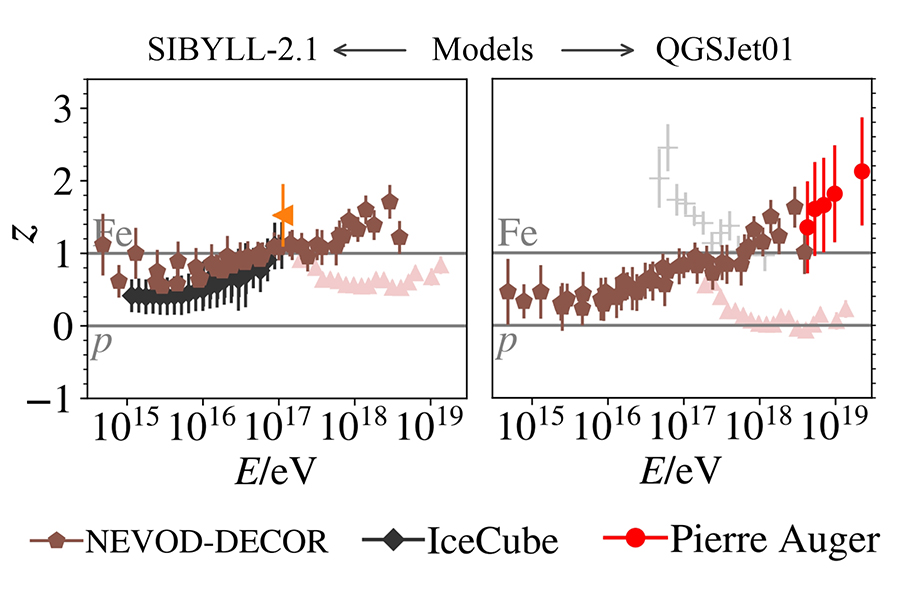The fifth International Symposium on Ultra-High Energy Cosmic Rays (UHECR-2018) has been held in Paris.
A great interest was aroused by the report of Hans Dembinski (Germany), devoted to the results of the international working group on the analysis of the "muon mystery" – the excess of muons in broad atmospheric showers (BAS) at ultrahigh energies, observed in many experiments. The report summarized in a single system the data of the experiments Pierre Auger, AMIGA, Telescope Array, IceCube, KASCADE-Grande, EAS-MSU, NEVOD-DECOR, SUGAR, Yakutsk and Hires-MIA.

The most impressive data was provided by the NEVOD-DECOR (see figure). Despite the small footprint (~ 70 sq m), they cover a record wide energy range of primary cosmic rays (from 1014 eV to 1018 eV), completely cover the energy interval investigated at the IceCube (space ~ 1 sq km), and reach data of the Pierre Auger Observatory (3000 square meters). Such unique results were obtained thanks to a new original approach to the study of the muon component of BAS.
"The figure shows the values with z > 1 (excess of muons), obtained in the experiments NEVOD-DECOR and Pierre Auger Observatory, which indicates the inclusion of some processes of new physics," commented the head of SEC NEVOD, Professor Anatoly Petrukhin.
It is important to note that for the first time the excess of muons in the energy range above 1017 eV ("muon mystery") was discovered in the experiment NEVOD-DECOR, and only five years later its existence was confirmed by the Pierre Auger Observatory.
Currently, an experiment is being carried out at the experimental complex NEVOD-DECOR to find possible physical processes responsible for the formation of an excess of muons.





